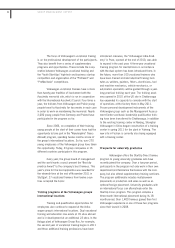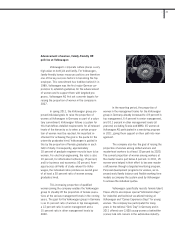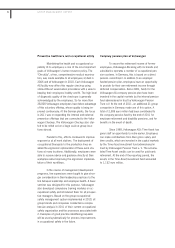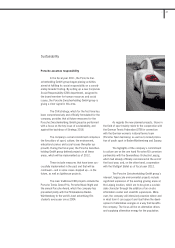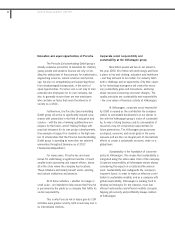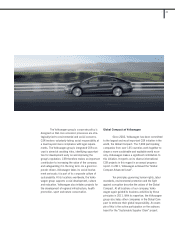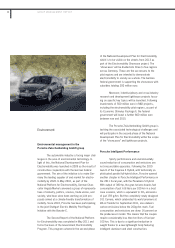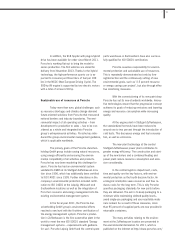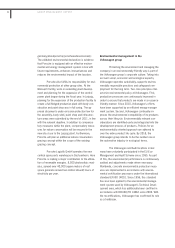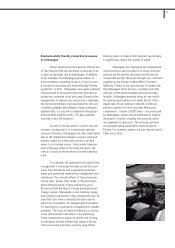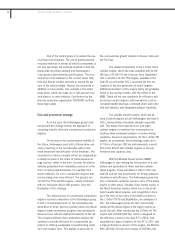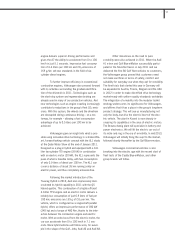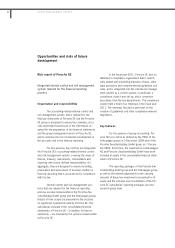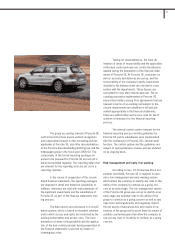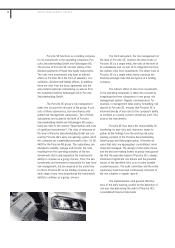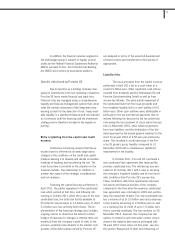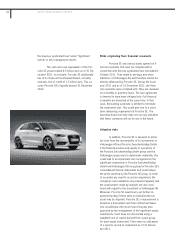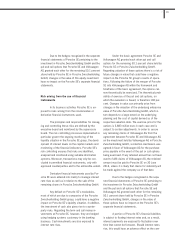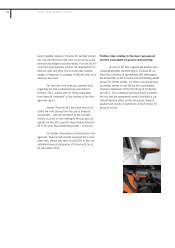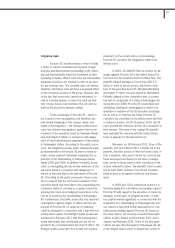Porsche 2011 Annual Report Download - page 93
Download and view the complete annual report
Please find page 93 of the 2011 Porsche annual report below. You can navigate through the pages in the report by either clicking on the pages listed below, or by using the keyword search tool below to find specific information within the annual report.
Environmentally friendly production processes
at Volkswagen
Active climate protection and the efficient use
of raw materials that are becoming increasingly scar-
ce play an important role at Volkswagen. In addition
to the emphasis the Volkswagen group places on
environmentally compatible products, it also focuses
on resource-conserving and environmentally friendly
production. In 2011, Volkswagen once again achieved
improvements to its key environmental indicators in
production compared to the prior year. Based on the
requirements of internal rules and process standards,
the environmental data of group production sites are
compiled, validated and analyzed. Using continually
updated data, it is possible to determine the group’s
environmental pollution trends. The data captured
currently covers 59 locations.
As part of the measures to protect the envi-
ronment, an objective is to continuously optimize
resource efficiency. Volkswagen not only understands
this as the relationship between resource input and
product output for a particular process, but also
views it in a broader sense – from product develop-
ment all the way down to recycling. Resource effi-
ciency is clearly at the forefront in product develop-
ment.
For example, the applicability of material flow
management in choosing innovative production proc-
esses from the vehicle and component production
areas was tested and material flow management was
introduced. The concrete effects of these measures
can be seen, among other areas, in the paint shop,
where material waste is being reduced by up to
85 percent with the help of a newly developed paint
change system. Volkswagen is also reducing energy
and material consumption in the components area. An
important topic here is reducing the base load for
electrical consumption, for example with procedures
for lowering the consumption of equipment in standby
operation. The focus of material efficiency is on proc-
esses with minimum lubrication or dry machining.
These include what is known as orbital cold forming,
an innovative forming method that replaces the ma-
chine processing previously used: by using blanks
that are similar in shape to the final part, we are able
to significantly reduce the amount of waste.
Volkswagen has developed and implemented
many processes and procedures to ensure that new
vehicles are 85 percent recyclable and 95 percent
recoverable overall. These percentages are confirmed
regularly by the German Federal Motor Transport
Authority. Thanks to the reprocessing of residue with
the Volkswagen SiCon process, recycling end-of-life
vehicles is both environmentally and economically
feasible. Volkswagen generally takes its own end-of-
life vehicles back without cost within the EU. Volks-
wagen taps into an extensive network of mid-size
business partners for their recycling. Many worn
components – around 13,000 items – are processed
by Volkswagen, tested and reconditioned as replace-
ment parts. In terms of quality and warranty, these
are equivalent to new parts. The recycling activities
are gradually being expanded to markets outside
Europe. For instance, engines are also reprocessed in
China since 2011.
93
2



